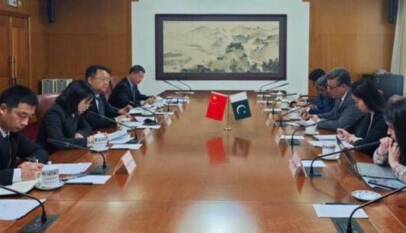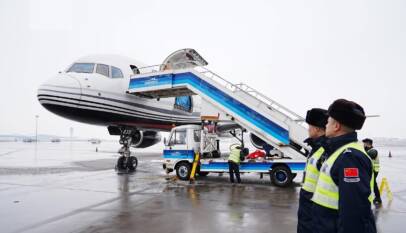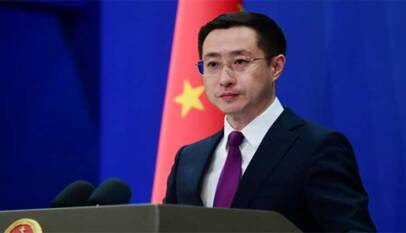BRI investment brings capital, technology and boost industries of the member countries: Deputy Secretary-General NDRC
Su Wei, Deputy Secretary-General of China's National Development and Reform Commission (NDRC) made remarks at the opening ceremony of 11th China Overseas Investment Fair (COIFAIR). Su Wei stated that Chinese investment introduced wealth and technologies to the recipient states and uplifted their industries leading to employment opportunities for the locals which show Chinese investment's vital role in the mutual growth of both countries. According to Chinese Ministry of Commerce's data from January-October 2019, China's non-financial outbound direct investment (ODI) reached $11.46 billion in 56 different nations. Pakistan is also among such nations along with Indonesia, Malaysia, UAE, Singapore and Thailand. China has signed many agreements with international organizations such as the World Bank, IMF, Asian Development Bank to provide capacity building training and other kinds of supports. To promote people to people connections, China has launched the exchange scholarship program. China Overseas Development Association organized the 11th COFAIR under the auspices of China's National Development and Reform Commission (NDRC). The theme of 11th COFAIR was "Collaborating on High Quality Construction for Prosperous Belt and Road Development" which was attended by 2,800 members from around 110 countries and regions.
China’s outbound investment has boosted the economic development of countries and regions along the Belt and Road Initiative(BRI) and brought tangible benefits for local peoples, said Su Wei, Deputy Secretary General of China’s National Development and Reform Commission(NDRC).
Su made the remark at the opening ceremony of 11th China Overseas Investment Fair (COIFAIR) here, reports Gwadar Pro net.
The two-day fair themed “Collaborating on High Quality Construction for Prosperous Belt and Road Development” has attracted 2,800 participants from around 110 countries and regions.
In his keynote speech, Su said China’s investment has brought capital and technologies to the destinations countries, boosted the industries’ development and created job opportunities, which has increasingly become an important force to promote the two sides’ mutually-beneficial development.
China’s non-financial outbound direct investment (ODI) in 56 countries participating in BRI had amounted to $11.46 billion in January-October this year, according to China’s Ministry of Commerce.
The investment destination countries included Singapore, Laos, Vietnam, Indonesia, Pakistan, Thailand, United Arab Emirates, Malaysia, Cambodia, Kazakhstan and Pakistan.
At the same time, Chinese enterprises have newly signed 5,494 projects contracts with 61 countries along BRI, with a total value of $112.17 billion.
Su said, Chinese enterprises’ direct investment in countries along BRI had reached about $98.6 billion from 2013 to 2018. China’s foreign direct investment stocks stood at $1.98 trillion by the end of 2018. Chinese enterprises had created job opportunities for 1.87 million foreign workers at the end of 2018, which made tangible sense of gain for peoples along BRI.
Chinese enterprises’ “Going abroad” backed by joint construction of BRI
Su pointed out that Chinese enterprises’Going abroad was backed by the joint construction of BRI.
As of the end of October 2019, China had signed 198 cooperation agreements about Belt and Road Initiative with 137 countries and 30 international organizations, according to Su.
During 2013-2018, the goods trade between China and countries along the Belt and Road Initiative(BRI) stood at 6.5 trillion US dollars. The value of import and export between China and countries along BRI had reached about $950 billion, up 9.5 percent year on year.
The second China International Import Expo (CIIE) made fruitful yields, with intended deals for one-year purchases of goods and services topping $71.13 billion, rising 23 percent as compared to last year.
China has established bilateral currency swap agreements with over 20 countries along BRI and RMB clearing service with seven countries. In addition, China has published a debt-sustainability analysis framework for the BRI’s participating economies.
China and eight multilateral development institutions including the World Bank, Asian Development Bank and Asian Infrastructure Investment Bank have established a multilateral development financing cooperation center.
China and International Monetary Fund(IMF) have jointly built a China-IMF Capacity Development Center to provide personnel training, support institution building and boost communication for countries along the Belt and Road.
In terms of people-to-people exchanges, China has launched the Chinese Government Scholarship program. China also has hosted many culture and people-to-people activities, like art festivals, film festivals and cultural relic shows.
The 11th COIFAIR was approved by China’s National Development and Reform Commission (NDRC) and hosted by China Overseas Development Association.
COIFAIR, launched in 2009, is the foremost platform for Chinese enterprises to go abroad, a portal for foreign entities to attract Chinese investments, as well as a professional platform for all participants to develop bilateral and multilateral investment cooperation.
Each year, COIFAIR could attract participants from over 100 countries and regions.
Pakistan, China review CPEC progress in high-level meeting
Pakistan’s Ambassador to China, Khalil Hashmi, met with Pan Jiang, Director General of the…











